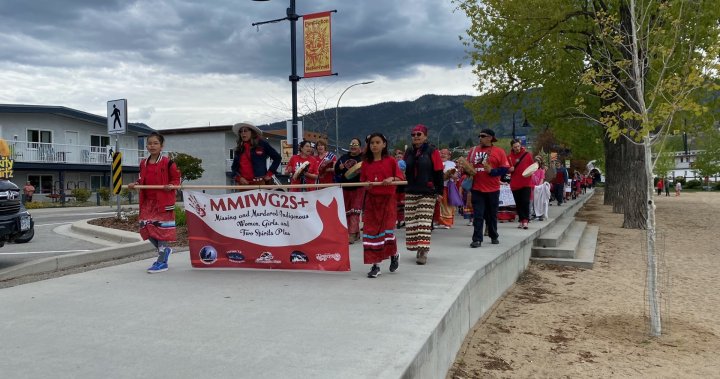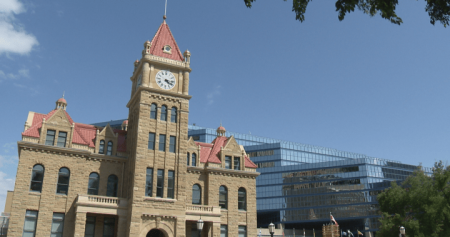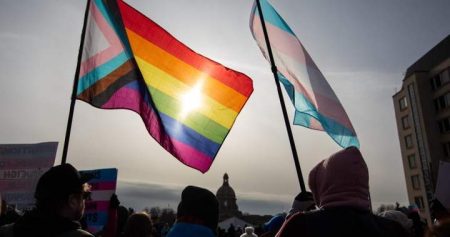Indigenous groups and leaders across British Columbia came together to demand justice and accountability on Red Dress Day, a day of solidarity with victims, survivors, and families of missing and murdered Indigenous women, girls, and members of the LGBTQ community. Indigenous women make up a significant percentage of femicide victims and missing women in Canada. They are also six times more likely to be murdered than their non-Indigenous counterparts. Indigenous leaders are calling for the implementation of the 231 Calls for Justice and the establishment of an Indigenous and Human Rights oversight body to address the ongoing crisis of violence against Indigenous women, girls, and LGBTQ peoples.
Red Dress Day was inspired by Métis artist Jamie Black’s installation project, in which red dresses were hung in public spaces across Canada and the United States as a visual reminder of the number of Indigenous women who have been killed or are missing. Events and walks were held around the province to raise awareness and honor the lives of Indigenous women. In Penticton, a Red Dress Day walk and film screening were organized, while in Pitt Meadows, a walk and ceremony took place. In Kamloops, models wore uniquely designed red dresses on the runway as part of the Revolutions Red Dress Fashion Festival, showcasing the creative ways in which the issue of missing and murdered Indigenous women and girls can be brought to light through art and fashion.
The Union of BC Indian Chiefs and the First Nations Leadership Council emphasized the need for continued efforts to end the crisis of violence against Indigenous women and girls, as rates of violence remain disproportionately high with no signs of slowing down. Indigenous women, girls, and two-spirit+ people are particularly vulnerable to violence, highlighting the systemic injustices faced by First Nations communities. Leaders are calling for concrete actions to address the related issues and for the timely implementation of the 231 Calls for Justice. The establishment of an Indigenous Rights Ombudspersons oversight body is seen as crucial in responding to this emergency and ensuring the protection of Indigenous rights.
The fashion industry has also played a role in raising awareness about missing and murdered Indigenous women and girls, with the creation of unique red dresses to honor Red Dress Day. In Kamloops, the Revolutions Red Dress Fashion Festival featured eight designers who created items inspired by the national day of awareness for missing and murdered Indigenous women and girls observed annually on May 5. The festival organizer, Kim Coltman, has a personal connection to the issue, as a survivor herself and the daughter of a residential school survivor. The fashion industry has provided a platform for Indigenous designers and models to share their stories and bring attention to the ongoing crisis of violence faced by Indigenous women and girls.
As Indigenous communities continue to advocate for justice and accountability, Red Dress Day serves as a powerful reminder of the need to address the systemic injustices and vulnerabilities faced by Indigenous women, girls, and LGBTQ peoples. The day of solidarity brings together individuals, organizations, and communities to honor the lives of those who have been lost to violence and to call for concrete actions to end the crisis. Through events, walks, ceremonies, and fashion shows, Indigenous leaders and advocates are working to raise awareness, amplify voices, and push for meaningful change to ensure the safety and well-being of Indigenous women and girls across the province.













